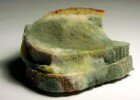Nocturnal leg cramps (the leg cramps at night) are not only painful, but they also prevent you from having a good night’s sleep, which is important to your health. So, now you probably ask yourself this question – why is it always at night? Well, it’s because of lack of physical activity during the day. Lack of fluids and blood flow to the legs are some of the most common reasons for nocturnal leg cramps.
The cramps and pain generally last for a few seconds. But the resulting muscle soreness can continue for up to a couple of days. Individuals who suffer from these cramps are usually above 50 years old, but that doesn’t mean that younger people are exempt. Leg cramps most commonly affect the calf muscle; however, some people have experienced them in their feet and thigh muscles as well.
Leg cramps vs. restless leg syndrome
These two syndromes both occur during sleeping hours, but that is their only similarity, namely, they are two completely different phenomena, and they differ in a number of ways:
- the restless leg syndrome is more of a discomfort or crawling feeling in your legs.
- the restless leg syndrome does not cause pain or cramping, while nocturnal leg cramps do.
- Moving the leg in the restless leg syndrome offers relief – moving the leg in nocturnal leg cramps does not, instead stretching is required.
- the restless leg syndrome causes the desire to move the legs, while nocturnal leg cramps often prevent movement.
Causes and risk factors of leg cramps at night
Nocturnal leg cramps can occur due to a number of reasons, but their exact cause is often unknown. However, these are the potential causes and risk factors:
- Standing or working on concrete floors
- Sitting improperly
- Sitting for prolonged periods of time
- Over-exertion of the muscles in the leg
- Alcoholism
Moreover, nocturnal leg cramps can also appear due to certain medical conditions, including:
pregnancy, dehydration, diuretics, statins, beta agonists, structural disorders like flat feet, endocrine disorders like diabetes, Parkinson’s disease and neuromuscular disorders.
Treatment and prevention
Different leg cramps treatments depend on the cause of the syndrome. For instance, if the reason is dehydration, then the solution is to stay well hydrated. However, in order to prevent and treat this condition, these tips will be of great help:
- First stretch your legs before going to bed,
- Do water exercises to build leg muscles.
- Use horse chestnut, which has been shown to increase blood flow to the legs.
- Take a relaxing, warm bath before going to sleep to ease any muscle tightness.
- Try acupuncture treatment to loosen tight leg muscles.
- Ensure you are not deficient in magnesium or potassium – deficiencies in both minerals are linked to muscle cramping.
- Wear ergonomic shoes and avoid high heels.
- Apply a heating pad to the affected area.
How to handle A nighttime muscle spasm attack
When nighttime muscle spasms occur, they cause such a painful sensation, that it can almost abandon you deadened. Therefore, handling it properly can offer a significant relief and leave you less sore afterwards. In order to handle these attacks better, you should follow these tips:
- While sitting on the floor amplify both legs in front you. Presently flex your feet at the lower legs and point your toes toward your knees.
- To obtain a better stretch out, you might need to pull on your feet.
- Then, try to get up gradually and stroll around a bit.
- You can enhance blood circulation by shaking your legs.
- Delicately rub the region in a roundabout movement.
- Make sure your covers and sheets are not sufficiently tight to make the leg muscle contract.
- In order to diminish discomfort, take a tablespoon of yellow mustard.
Source: www.hlfteam.com




